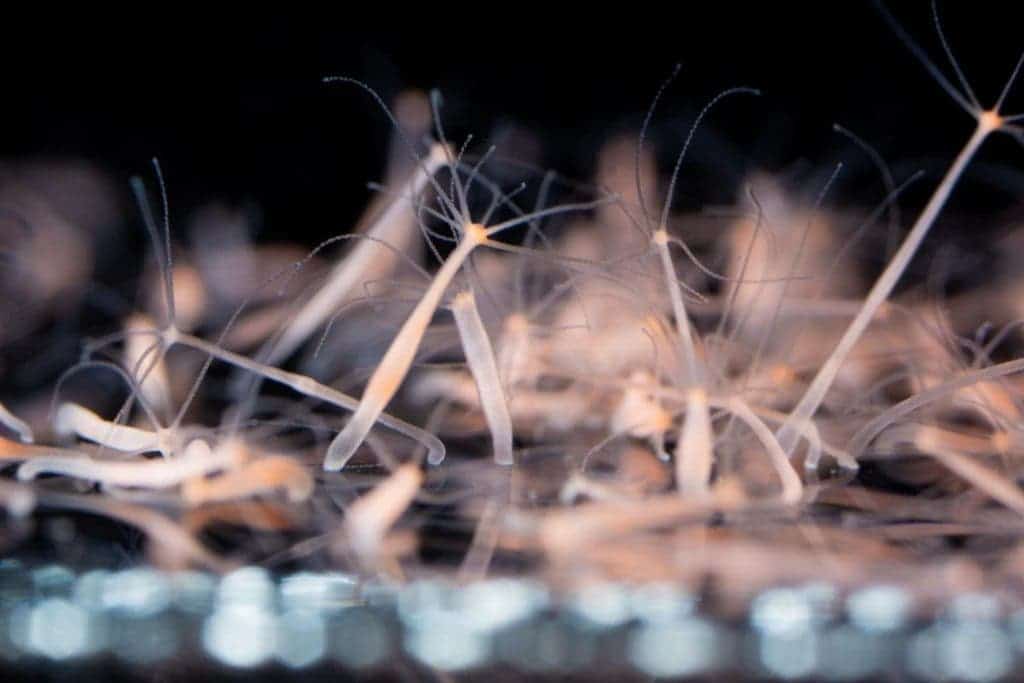Researchers are especially interested in hydra’s ability to regenerate its nervous system, which could new therapeutics for treating trauma or degenerative disease in humans.

The tiny freshwater invertebrate known as the hydra, while definitely less scary than its mythological counterpart, regenerates damaged cells and tissues. This ability is so poignant that, were you to cut a hydra in half, it would regrow its body and nervous system in a matter of days.
Trying to understand exactly how it does this, researchers at the University of California have traced the evolution of the hydra’s cells throughout its life, finding three lines of stem cells that differentiate into nerves, muscles, or other tissues.
Life renewed
“The beauty of single-cell sequencing and why this is such a big deal for developmental biologists is that we can actually capture the genes that are expressed as cells differentiate from stem cells into their different cell types,” says Celina Juliano, assistant professor in the UC Davis Department of Molecular and Cellular Biology and lead author of the study.
Juliano’s team sequenced RNA transcripts of 25,000 single hydra cells to follow the genetic trajectory of nearly all of the animal’s differentiated cell types. The study thus creates a high-resolution map of the entire developmental path of the hydra’s cells.
Hydras continuously renew their cells from stem cell populations, the team explains. Based on the analysis of sets of messenger RNA molecules (transcriptomes) retrieved from individual cells and groups of cells (based on shared expressed genes), the team separated these stem cells into three different lineages. They could then build a decision tree showing how each lineage matures into different cell types and tissues. For example, the interstitial stem cell lineage produces nerve cells, gland cells, and the stinging cells in the animal’s tentacles.
“By building a decision tree for the interstitial lineage, we unexpectedly found evidence that the neuron and gland cell differentiation pathway share a common cell state,” said Juliano. “Thus, interstitial stem cells appear to pass through a cell state that has both gland and neuron potential before making a final decision.”
The molecular map also allowed Juliano and colleagues to identify the genes that influence these decision-making processes, which will be the focus of future studies.
The team hopes that their work will allow developmental biologists to understand regulatory gene networks that control the early evolution of the hydra, networks that they say are shared among many animals, including humans. Understanding how the hydra regenerates its entire nervous system could thus help us better understand neurodegenerative diseases in humans.
“All organisms share the same injury response pathway but in some organisms like hydra, it leads to regeneration,” said coauthor and graduate student Abby Primack. “In other organisms, like humans, once our brain is injured, we have difficulty recovering because the brain lacks the kind of regenerative abilities we see in hydra.”
The paper “Stem cell differentiation trajectories in Hydra resolved at single-cell resolution” has been published in the journal Science.


